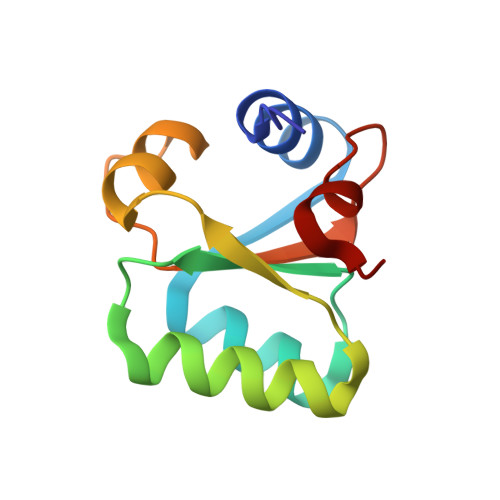Solution Structure and Thermal Stability of Ribosomal Protein L30E from Hyperthermophilic Archaeon Thermococcus Celer
Wong, K.-B., Lee, C.-F., Chan, S.-H., Leung, T.-Y., Chen, Y.W., Bycroft, M.(2003) Protein Sci 12: 1483
- PubMed: 12824494
- DOI: https://doi.org/10.1110/ps.0302303
- Primary Citation of Related Structures:
1GO0, 1GO1 - PubMed Abstract:
To understand the structural basis of thermostability, we have determined the solution structure of a thermophilic ribosomal protein L30e from Thermococcus celer by NMR spectroscopy. The conformational stability of T. celer L30e was measured by guanidine and thermal-induced denaturation, and compared with that obtained for yeast L30e, a mesophilic homolog. The melting temperature of T. celer L30e was 94 degrees C, whereas the yeast protein denatured irreversibly at temperatures >45 degrees C. The two homologous proteins also differ greatly in their stability at 25 degrees C: the free energy of unfolding was 45 kJ/mole for T. celer L30e and 14 kJ/mole for the yeast homolog. The solution structure of T. celer L30e was compared with that of the yeast homolog. Although the two homologous proteins do not differ significantly in their number of hydrogen bonds and the amount of solvent accessible surface area buried with folding, the thermophilic T. celer L30e was found to have more long-range ion pairs, more proline residues in loops, and better helix capping residues in helix-1 and helix-4. A K9A variant of T. celer L30e was created by site-directed mutagenesis to examine the role of electrostatic interactions on protein stability. Although the melting temperatures of the K9A variant is approximately 8 degrees C lower than that of the wild-type L30e, their difference in T(m) is narrowed to approximately 4.2 degrees C at 0.5 M NaCl. This salt-dependency of melting temperatures strongly suggests that electrostatic interactions contribute to the thermostability of T. celer L30e.
Organizational Affiliation:
Department of Biochemistry and Molecular Biotechnology Programme, Room 507B, Mong Man Wai Building, The Chinese University of Hong Kong, Shatin, Hong Kong, China. kbwong@cuhk.edu.hk














